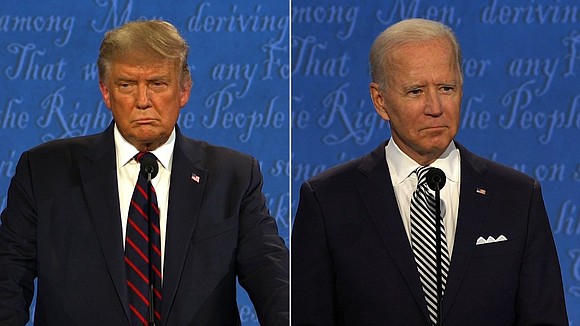Politics
Biden’s Fiscal Plan Defines Economic Frontlines in Contrast to Trump
In a move that underscores the ideological chasm between the two major political parties in the United States, President Joe Biden’s budget proposal for the upcoming fiscal year has laid out stark economic battle lines with his predecessor and presumptive Republican presidential nominee, former President Donald J. Trump.
Preview of Divergent Paths
The budget, unveiled earlier this week, offers a preview of the divergent paths that retirement programs, tax policies, trade relations, and energy strategies could take depending on the outcome of the November election. With the nation’s economic recovery at a crucial juncture, Biden’s proposals signal a departure from the policies of the Trump administration, setting the stage for a contentious debate over the future direction of the country’s economy.
“Biden’s budget sets the stage for divergent paths, signaling a departure from Trump’s policies,” according to Barron’s Subscription.
Contrasting Priorities
Over the past three years, President Biden has championed legislation aimed at bolstering the green energy sector, investing in infrastructure, and shoring up the domestic supply chain with subsidies for key industries such as microchips, solar technology, and electric vehicles. These initiatives reflect a commitment to addressing climate change, modernizing infrastructure, and promoting American manufacturing—a stark departure from the priorities of the Trump administration, which focused on tax cuts and deregulation.
Social Safety Nets in Focus
One of the key areas of contrast between the two administrations is their approach to social safety net programs. Both Biden and Trump have pledged to protect programs like Social Security and Medicare. However, their budget proposals reveal divergent strategies for ensuring the long-term sustainability of these programs. Biden’s plan includes measures to improve the solvency of Social Security and Medicare. This involves increasing contributions from wealthy Americans. Meanwhile, Trump has hinted at the possibility of entitlement cuts in the future.
Trade Policy Tensions
Trade policy is another area of contention. Biden largely maintains the tariffs on Chinese imports imposed by Trump while signaling a desire to deepen trade ties with American allies and reduce reliance on adversaries like China. In contrast, Trump has suggested imposing new tariffs and escalating trade tensions. This sets the stage for potential trade wars in a second term.
Uncertain Economic Outlook
The budget proposal comes at a critical time for the United States economy, which is navigating the final stages of what economists predict will be a “soft landing” after two years of high inflation. The prospect of a second Trump administration has injected uncertainty into the economic outlook. Businesses and policymakers are bracing for potential policy shifts that could have far-reaching implications for the economy.
High-Stakes Showdown
As the November election approaches, the battle lines are drawn. They set the stage for a high-stakes showdown over competing visions for America’s economic future. With the nation at a crossroads, the outcome of the election will determine the direction of economic policy. Additionally, it will shape the trajectory of the recovery and the prosperity of millions of Americans.
Subscribe now for a two-year WSJ Print Edition, plus digital access on iPhone, Android, and PC. Stay informed on finance, politics, and more. Sign up today and save up to 70%.
For more information, please contact the following telephone number:
WSJ Phone Number: (800) 581-3716

